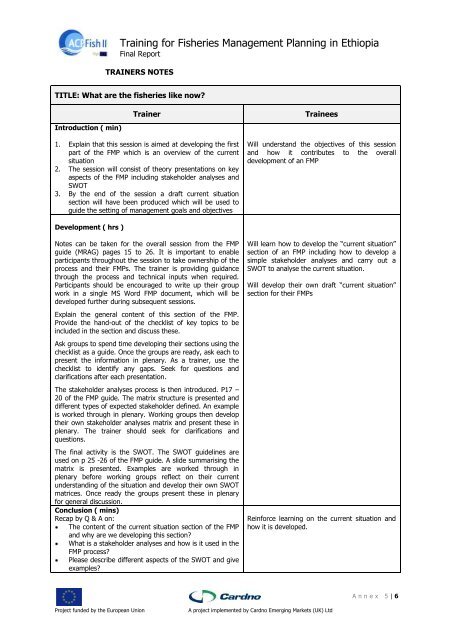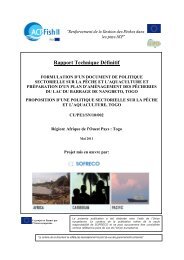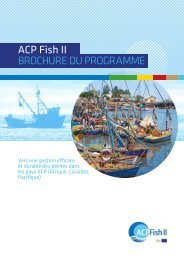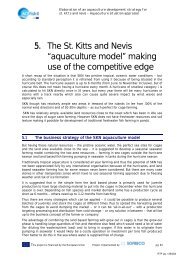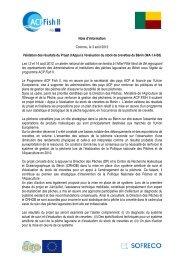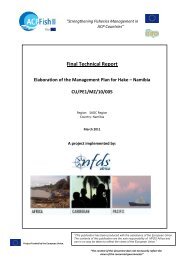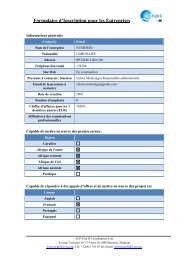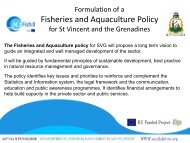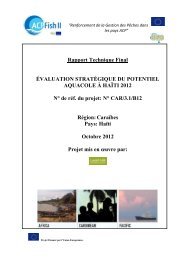Final Technical Report - ACP Fish II
Final Technical Report - ACP Fish II
Final Technical Report - ACP Fish II
You also want an ePaper? Increase the reach of your titles
YUMPU automatically turns print PDFs into web optimized ePapers that Google loves.
Training for <strong>Fish</strong>eries Management Planning in Ethiopia<strong>Final</strong> <strong>Report</strong>TRAINERS NOTESTITLE: What are the fisheries like now?Introduction ( min)TrainerTrainees1. Explain that this session is aimed at developing the firstpart of the FMP which is an overview of the currentsituation2. The session will consist of theory presentations on keyaspects of the FMP including stakeholder analyses andSWOT3. By the end of the session a draft current situationsection will have been produced which will be used toguide the setting of management goals and objectivesWill understand the objectives of this sessionand how it contributes to the overalldevelopment of an FMPDevelopment ( hrs )Notes can be taken for the overall session from the FMPguide (MRAG) pages 15 to 26. It is important to enableparticipants throughout the session to take ownership of theprocess and their FMPs. The trainer is providing guidancethrough the process and technical inputs when required.Participants should be encouraged to write up their groupwork in a single MS Word FMP document, which will bedeveloped further during subsequent sessions.Will learn how to develop the “current situation”section of an FMP including how to develop asimple stakeholder analyses and carry out aSWOT to analyse the current situation.Will develop their own draft “current situation”section for their FMPsExplain the general content of this section of the FMP.Provide the hand-out of the checklist of key topics to beincluded in the section and discuss these.Ask groups to spend time developing their sections using thechecklist as a guide. Once the groups are ready, ask each topresent the information in plenary. As a trainer, use thechecklist to identify any gaps. Seek for questions andclarifications after each presentation.The stakeholder analyses process is then introduced. P17 –20 of the FMP guide. The matrix structure is presented anddifferent types of expected stakeholder defined. An exampleis worked through in plenary. Working groups then developtheir own stakeholder analyses matrix and present these inplenary. The trainer should seek for clarifications andquestions.The final activity is the SWOT. The SWOT guidelines areused on p 25 -26 of the FMP guide. A slide summarising thematrix is presented. Examples are worked through inplenary before working groups reflect on their currentunderstanding of the situation and develop their own SWOTmatrices. Once ready the groups present these in plenaryfor general discussion.Conclusion ( mins)Recap by Q & A on:The content of the current situation section of the FMPand why are we developing this section?What is a stakeholder analyses and how is it used in theFMP process?Please describe different aspects of the SWOT and giveexamples?Reinforce learning on the current situation andhow it is developed.A n n e x 5 | 6Project funded by the European UnionA project implemented by Cardno Emerging Markets (UK) Ltd


